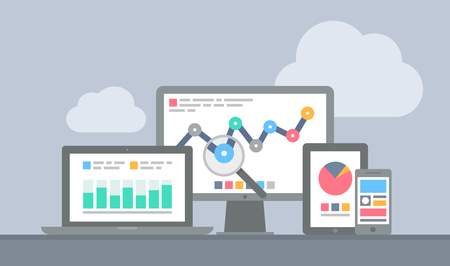
One in five Americans own a smartphone, and most of these people are using their apps. App viewership has increased by a fifth as well (according to Localytics). The trend in app use is continuing to grow. As a desktop marketer, you know you have to follow the trends, but will the same tactics get you in front of your app-using customers?
In a word, marketers may examine the analytics gathered from mobile apps, and use this information similarly to how you would use your desktop marketing analytics.
Based on a Localytics webinar, Appmakr has simplified the process of analysis. Based on the funnel of customer engagement, they have tracked the process of conversion. Beginning with a consumer noticing an app, the customer then purchases or downloads it, engages with the content, and then ultimately answers the final call-to-action – conversion through an app event. The process is quite similar to how consumers interact with web pages.
All in all, it’s a matter of learning some new terminology.
In a similar article, the experts at App Developer Magazine discuss a white paper in which they have compiled forty pages that take the guesswork out of App Marketing for Web Marketers. Again, the techniques for reaching customers are very similar, but the technology is a bit different. For example, people tend to use the web when they are searching for something, but they use apps to perform a task. Using this knowledge, marketers will see that the approach to advertising must change a bit.
The biggest takeaways from these articles are their emphasis upon analytics. While the analytic terminology is different, it is easy to see how the terms relate. In case you are new to app analytics, here is a simple breakdown of the terminology (where the left term is for web, the right refers to apps), delineated according to where it lies in the customer engagement funnel:
Top of the Funnel
Site Traffic = Downloads
- App Store Optimization (ASO) replaces SEO as the way to get consumers to install your app.
Web Visitors = App Users
- App users are a little more engaged that site visitors, because they must download the app.
Web Pageviews or Time on Website = App Session Length
- Sessions show frequency and how much time is spent on an app, rather than just landing on a page.
Middle of the Funnel
Monthly Unique Site Visitors = Monthly Active Users (MAUs)
- Since users have already downloaded the app, active users are the closest relative to uniques.
Target Web Audience = App User Segment
- Just like a target audience, segments allow you to customize your campaign for these users.
Web Pages = App Screens
- One to one: number of pages and microsites relate to the number of screens in an app.
Time on Page = Time on Screen
- Allows you to see how long users spend on a screen – and when they decide to leave it.
Bottom of the Funnel
Web Conversions = App Events
- Results of calls-to-action within an app are the equivalent of conversions.
Bounce Rate = Funnel Drop-off Rate
- In the app world, a bounce is a “drop-off,” which is when users fail to complete an event after showing some interest.
Revenue per Visitor = User Lifetime Value (LTV)
- Show the worth of a visitor throughout their total engagement of an app – the most important gauge of revenue.
For more information, consult the aforementioned articles. Develop your apps and check out the analytics using these metrics. You will see that the relative terms are quite similar to their desktop equivalents. The key is to determine where a different angle will help you to market to app users, so that you can produce as much revenue from your app events as possible.
